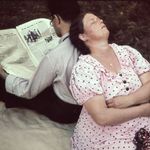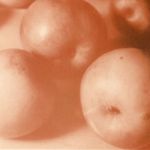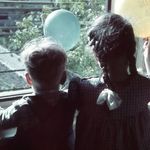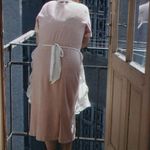Light as Colour
LIGHT AS COLOUR
Coloured and Colour Photography in Slovenia from Its Origins until 1945
Maribor Art Gallery, Strossmayerjeva
Opening: Friday, 12 December 2014 at 19:00
The exhibition has been prolonged until 22 February 2015!
The Museum of Architecture and Design (MAO) in collaboration with the National Museum of Contemporary History in Ljubljana presents the first review of coloured and colour photographic production on Slovenian soil from its origins in mid-19th century until 1945. The review tracks the development of colour photography since its beginnings, when photographs were coloured by means of various techniques, ranging from autochrome plates, which represent the first standardised additive process that was suitable also for amateur photographers, to the first colour transparencies in the mid-1930s. The exhibition will display a total of c. 300 works; mostly with reproductions presenting the oeuvres of individual authors and the most important thematic sections (landscape, genres, portrait, night shots etc.). A part of the exhibition also displays examples of colour print, including postcards and the first colour photographs published in illustrated magazines.
After 1907 photography made using a standardised additive process called autochrome plate was employed by the academic painter and puppeteer Milan Klemenčič, the pharmacist from Ljubljana Gabrijel Piccoli and the first lady of Slovenian colour photography, the amateur photographer Jela Repič. It is documented that this process was also used by the well-known pioneer of Slovenian film Karol Grossmann. These photographers mostly photographed family members and were devoted to a realistic portrayal. In the 1920s and first half of the 1930s photographers in Slovenia used the so-called Agfa colour plates which were replaced by subtractive colour transparencies in the second half of the 1930s. With mass production and standardised processes as well as thanks to adequate quality, skilful marketing and reasonable prices the American Kodachrome and German Agfacolor brought about the first genuine boom of colour transparencies in Slovenia. At that time especially members of the Fotoklub Ljubljana (Photo Club of Ljubljana) established themselves: Karlo Kocjančič, Ivo Koželj and Slavko Smolej, and a few independent photographers, e.g. Franc Bajd, Mirko Križnar and a professional photographer Peter Lampič. In Maribor the pilot and amateur photographer Franjo Pivka used Agfacolor Karat. The landscapes, portraits, genres and still lifes were gradually complemented by shots of movement and public events, by scenes of urban exteriors and interiors, and images of industrial buildings. Most of the authors upgraded their initial realistic approach with experimental shots under poor and monochromatic light and with colour studies, sequential atmospheric shots and modernistic compositional series. However, the number of colour photographs which have been preserved on paper from that time is modest in Slovenian collections; they were entirely produced abroad.
The wartime conditions shifted the focus of photography to its documentary side. Apart from the shots that document the presence of German and Italian occupying forces in Slovenia, numerous, yet unfortunately mostly anonymous colour photographs from partisan life on the one hand and fewer reports on the Home Guard movement on the other have been preserved. The wartime conditions shifted the focus of photography to its documentary side. Apart from the shots that document the presence of German and Italian occupying forces in Slovenia, numerous, yet unfortunately mostly anonymous colour photographs from partisan life on the one hand and fewer reports on the Home Guard movement on the other have been preserved.
The exhibition will present material from the collection of the Museum of Architecture and Design and from the collections of numerous Slovenian museums, galleries and other institutions: Gornjesavski muzej (Upper Sava Valley Museum) in Jesenice, Museum of Gorenjska in Kranj, Museum of Modern Art in Ljubljana, Museum of Recent History Celje, National Museum of Contemporary History in Ljubljana, Velenje Museum, National Gallery of Slovenia in Ljubljana, National Museum of Slovenia in Ljubljana, Denver Public Library, Colorado, USA, and from several private collections.
Curator: Dr. Primož Lampič
YOU ARE KINDLY INVITED!
Organised by:








